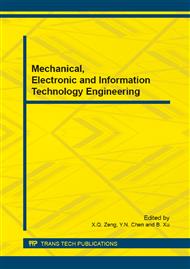[1]
Munizaga, Marcela A., and Carolina Palma. Estimation of a disaggregate multimodal public transport Origin–Destination matrix from passive smartcard data from Santiago, Chile., Transportation Research Part C: Emerging Technologies 24 (2012): 9-18.
DOI: 10.1016/j.trc.2012.01.007
Google Scholar
[2]
Chrobok, Roland, et al. Different methods of traffic forecast based on real data., European Journal of Operational Research 155. 3 (2004): 558-568.
DOI: 10.1016/j.ejor.2003.08.005
Google Scholar
[3]
Weijermars, Wendy, and Eric van Berkum. Analyzing highway flow patterns using cluster analysis., Intelligent Transportation Systems, 2005. Proceedings. 2005 IEEE. IEEE, (2005).
DOI: 10.1109/itsc.2005.1520157
Google Scholar
[4]
Friedrich, Markus, et al. Generating origin-destination matrices from mobile phone trajectories., Transportation Research Record: Journal of the Transportation Research Board 2196. 1 (2010): 93-101.
DOI: 10.3141/2196-10
Google Scholar
[5]
Roweis, Sam T., and Lawrence K. Saul. Nonlinear dimensionality reduction by locally linear embedding., Science 290. 5500 (2000): 2323-2326.
DOI: 10.1126/science.290.5500.2323
Google Scholar
[6]
Yu, Hua, and Jie Yang. A direct LDA algorithm for high-dimensional data—with application to face recognition., Pattern recognition 34. 10 (2001): 2067-(2070).
DOI: 10.1016/s0031-3203(00)00162-x
Google Scholar
[7]
Punj, Girish, and David W. Stewart. Cluster analysis in marketing research: review and suggestions for application., Journal of marketing research(1983): 134-148.
DOI: 10.1177/002224378302000204
Google Scholar
[8]
Dueck, Delbert, and Brendan J. Frey. Non-metric affinity propagation for unsupervised image categorization., Computer Vision, 2007. ICCV 2007. IEEE 11th International Conference on. IEEE, (2007).
DOI: 10.1109/iccv.2007.4408853
Google Scholar
[9]
Jackson, J. Edward. A user's guide to principal components. Vol. 587. John Wiley & Sons, (2005).
Google Scholar
[10]
Yang, Jian, et al. Two-dimensional PCA: a new approach to appearance-based face representation and recognition., Pattern Analysis and Machine Intelligence, IEEE Transactions on 26. 1 (2004): 131-137.
DOI: 10.1109/tpami.2004.1261097
Google Scholar
[11]
Frey, Brendan J., and Delbert Dueck. Clustering by passing messages between data points., science 315. 5814 (2007): 972-976.
DOI: 10.1126/science.1136800
Google Scholar
[12]
Xia, Ding-yin, et al. Local and global approaches of affinity propagation clustering for large scale data., Journal of Zhejiang University SCIENCE A9. 10 (2008): 1373-1381.
DOI: 10.1631/jzus.a0720058
Google Scholar


